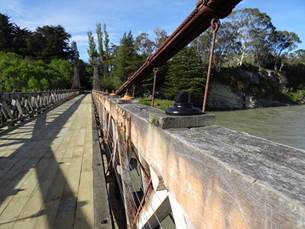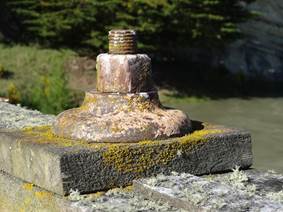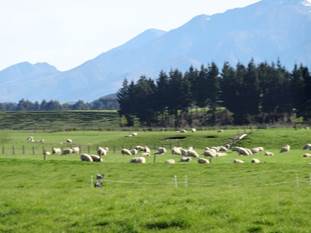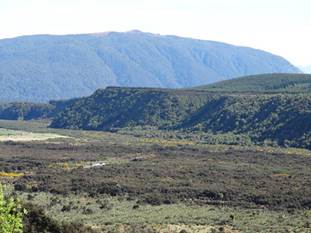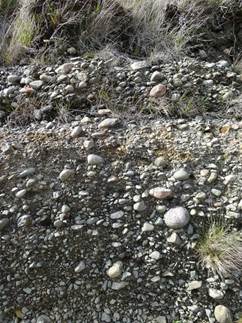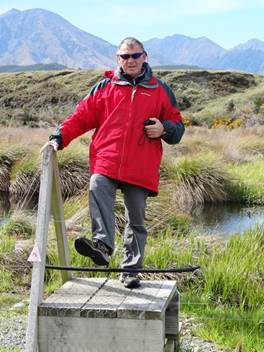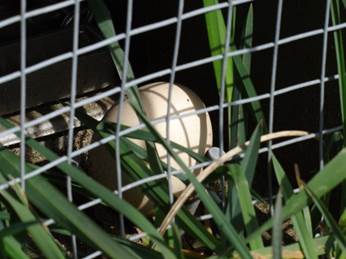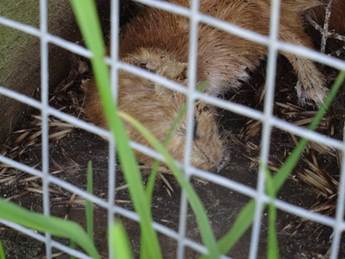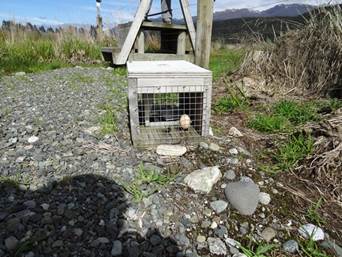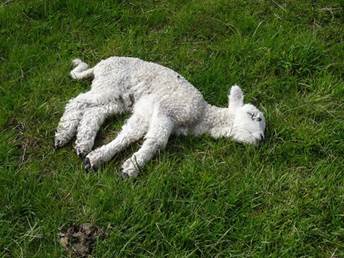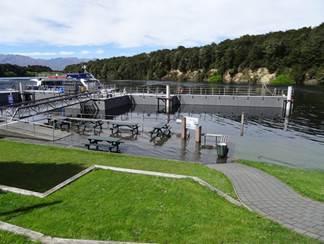Road to Te Anau

On the way to Te Anau we stopped by the Clifden Suspension Bridge – the longest span in NZ. Officially opened in 1899 it encouraged further settlement to the east of the river and used up until 1974. You can walk across it.
The bridge is made from totara (the Maori made their canoes from this wood.
Some bolts have been replaced in areas where the wood has started to split.
The bridge crosses the fast moving Waiau River. Apparently death by drowning was considered the third natural cause of death in NZ, 2000 people a year were drowned. You can see the rate of flow in the bow wave on the pillar of the road bridge. Nice lichen growing on the wood.
A house and shed in need of a bit of TLC and more sheep. By the way there are about 40 million sheep in NZ. This figure rises to about 76 million during lambing season.
Did a short walk through the Rakatu Wetlands, an area being restored. The sun is out and there are snowy ountains in the distance. The present floodplain of the river Waiau has been carved out of previous braided river terraces. This ancient river and its associated floodplains evolved during the many cycles of glacial advance and retreat that started in the area about half a million years ago. You can see two river terraces here, one we were walking on to the left. On the far side of the river you can see a landslide and the old floodplain reveled. On the right flat floodplans and tree covered rver terrace slopes.
The glacial remains exposed on the other side of the valley. The river is no longer braided and is in a small portion of the previous floodplain – that was 10km wide!
This is one of the river terraces we walked up. A lot of material has been weathered away here. The large valley glaciers of Fjordland created the major lake of Te Anau and Manapouri as well as gouging out the sounds. They carried huge loads of sediments and gravel and dumped them as galcial outwash plains, which is what we have here. As the the glaciers retreated, the river cut down through the sediments eventually lowering the level of the valley floor to its present location. You can see suites of remananet terraces left behind from previous floodplains. The rocks are all smooth and faily well rounded. Big variation in size.
Paul messing around.
Paul carries on with his obsession of traps.
This one was baited with an egg had a dead stoat in it. In NZ the only good stoat, weasel or possum is a dead one. New Zealand or Zealandia, broke away from Gondwanaland between 80-100 million years ago, before the birth of mammals There were no mammalian predators here, the only two mammals that eventually found their way here were two species of bats. The birds no longer needed to fly so lost thie wings. They also took on just about size of non-existent mammals. There were eleven different species in southland of the long necked moa moa (I didn’t know that), the kiwi is the only remainling one. The tallest could browse forest leaves up to 4m high. There is a flightless parrot – the kea - that lives in the mountains and a couple of other species. The staots and weasels were introduced to try to curb an exploding rabbit population – unfortunatley the ground living flightless birds never stood a chance. Lots of places put down poisonous bait and lay traps to try to get rid of them.
Another further along the footpath was empty. The weasel or stoat wasn’t the only thing dead.
They have had a bit of rain here. This is one of the Doubtful Sound cruise booking offices at Manapouri. The picnic tables going underwater. View of Lake Manapouri on the right.
|



